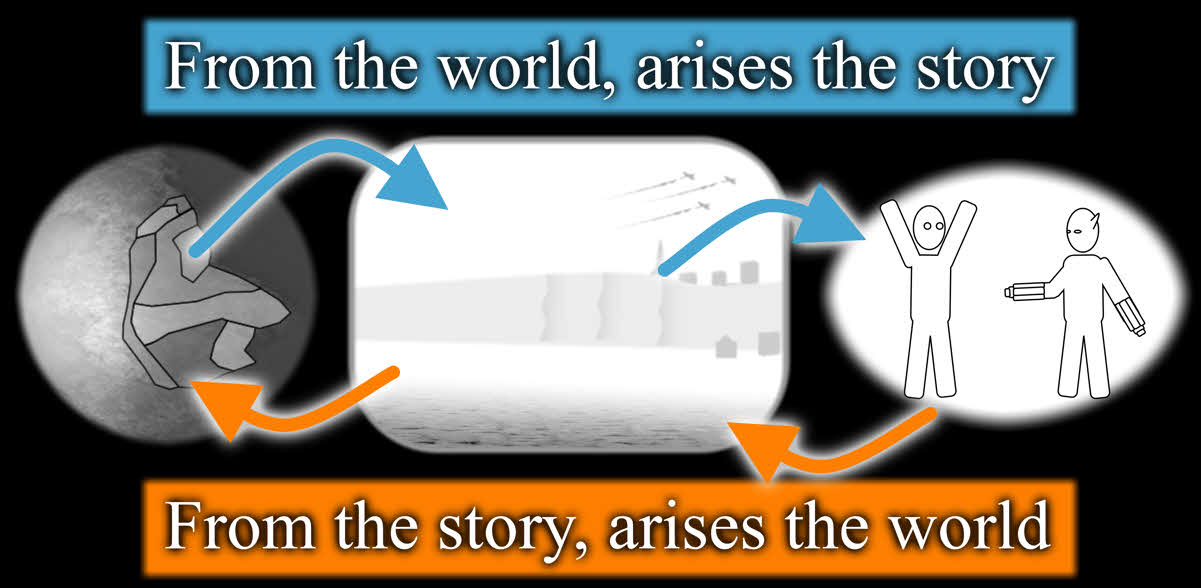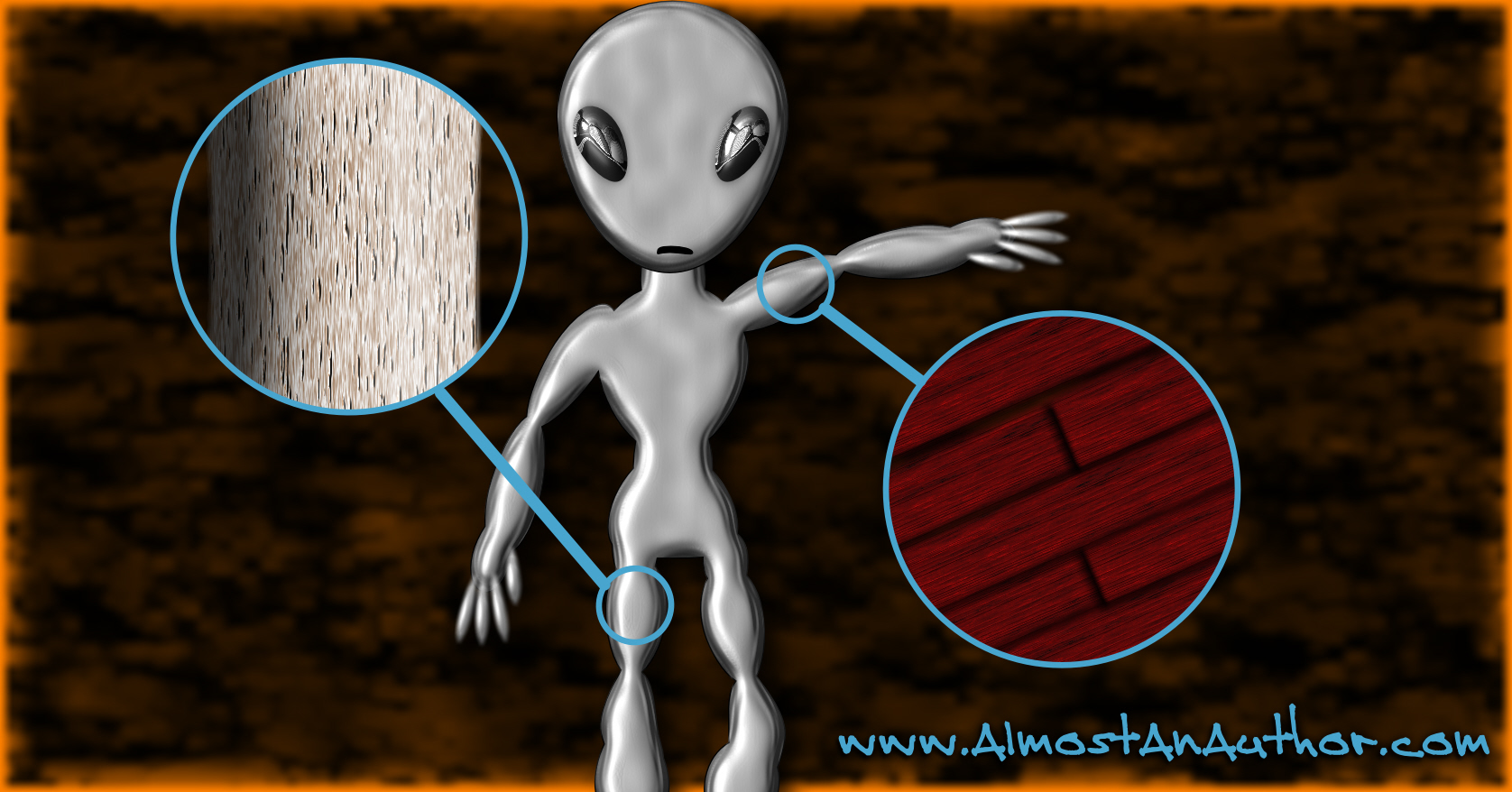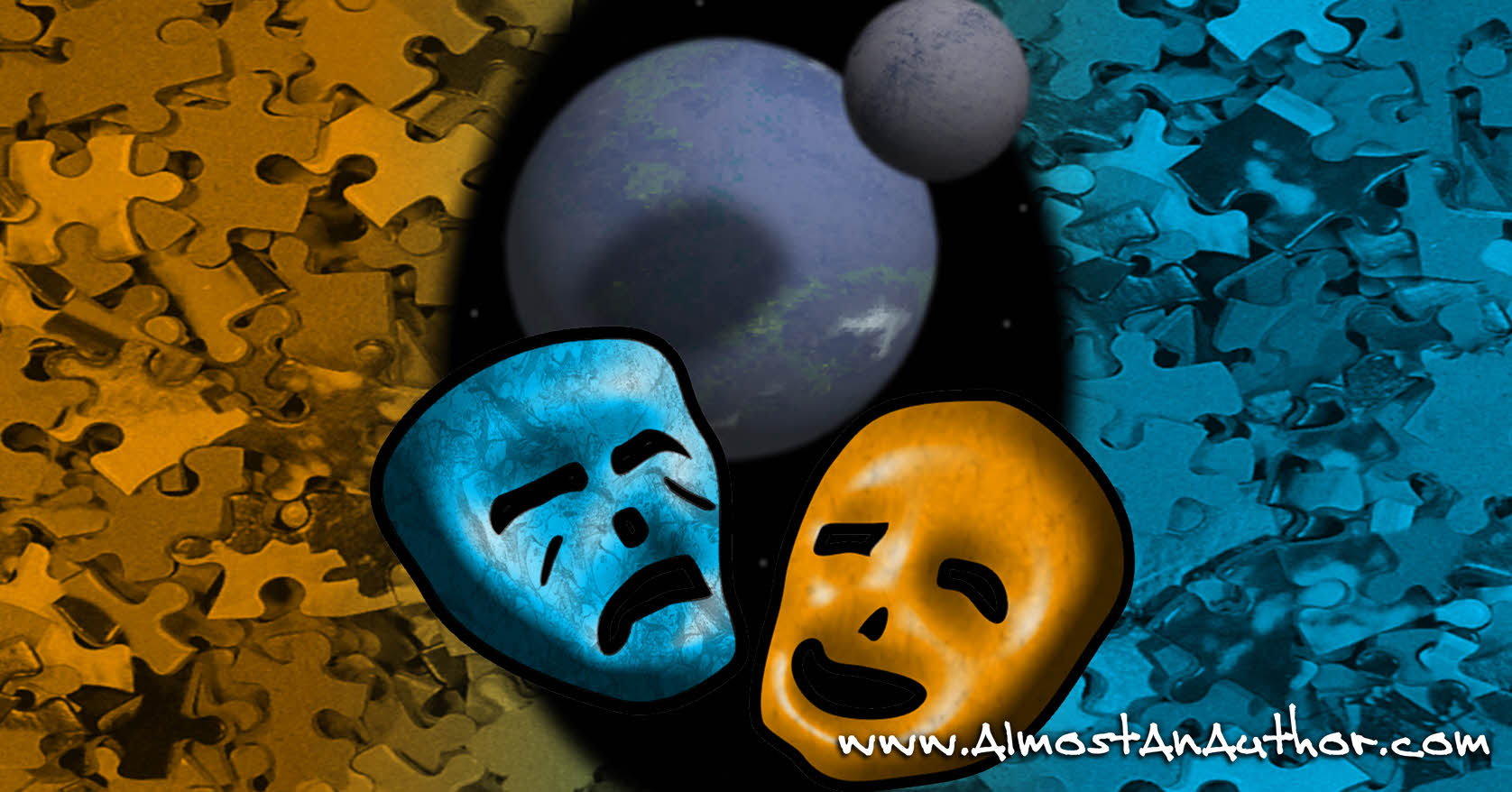So you want to create a storyworld, eh? Well, it took God six days to complete the one you’re living in, so don’t expect to make yours in one day. Worlds are complicated things, and in order to make one believable, you’ll need to take into consideration a whole host of things from politics to geography. But first, let’s approach the philosophy of world creation. There are two extremes, but most authors approach the task with a little give and take from both.
[bctt tweet=”So you want to create a world, eh? #storyworld #scifi” via=”no”]
From the story, arises the world…
In this approach, you start with a story idea and create the world as the story progresses. You haven’t mapped out the flora or fauna and you may have no idea what the planet’s political structure looks like, but you’ll figure everything out as you write. The principle advantage to this method is speed. Specifically, you can start writing immediately and fill in details later as you figure them out.
But before you get started, you’ll need at least a general idea of the storyworld’s outlook. Even something simple like knowing your universe is similar to Star Wars, or that magic and technology are used like Final Fantasy VII, that can help a lot. You can’t copy the intellectual property, but a general idea can help.
A word of caution: when you use this process, you MUST go back and examine your manuscript for consistency. If you flippantly mention the protagonist grew up climbing trees, you can’t later say his hometown was a desert. Similarly, if you realize midway into your book that you’d like to populate the earth with elves or cyborgs (or cyborg elves, whatever), you’re going to have to go back and add details to that effect earlier in the novel unless you intend to completely catch the reader off guard.
From the world, arises the story…
With this style, you design maps, ideologies, technology, and fantastic creatures early. Your characters are crafted within the realm of this fictitious land, and as a result, they feel genuine. Why? Because their motivations are drawn from the rich history you’ve created. In fact, the main advantage to this method is that the world will feel alive, because you’ve already considered how its inhabitants fare in their daily routines.
One problem I’ve seen with this approach is when a proud author frontloads his manuscript with world-details instead of the actual story. It’s understandable, right? I mean he’s created an entire ecosystem in his head. But the result is a lengthy prologue that belongs in a reference manual for a roleplaying game. Boring! Instead, display the richness of your universe in the way your characters interact with it. Subtlety is the key.
The other drawback is “analysis paralysis.” If you worry too much about the way your world will hold together, you may never get around to actually writing your story. If you want to be an author, you know you eventually have to write a book, right?
[bctt tweet=”If you want to be an author, you know you eventually have to write a book, right? #author #writer” via=”no”]
Finding middle ground…
As I said, most authors approach world creation with a hybrid of the two methods. As they write a couple chapters, their heads are filled with ideas for international drama. As that grand-scale conflict solidifies, new incentives are born into their characters. And so it goes. Most importantly, understand the advantages and disadvantages of the two philosophies and pick a method that works for you.







10 Comments
I really enjoyed this post. For the first time ever, I’m trying to create a world and it’s a little bit daunting, to be honest. Thankfully, it’s based upon medieval-ish/early Renaissance-ish Britain, so I didn’t exactly have to come up with a whole new culture or anything. Getting the geography and social structure set up has been a little bit challenging, but I’m trying to keep it simple. No complicated maps for this girl!
Ashley… I have a world with maps. I refer to them constantly and ensure that I am paying attention to the smallest details.. nothing is worse than finding out I wrote a scene, only to learn I described the sunlight, shade, etc. all from the wrong direction. Keep it simple if you can. 🙂
I will pray for you, Ashley. I am in awe of fiction writers and all that is involved in storytelling. I am a non fiction writer at the moment.
Ashley, you don’t need maps, but like Cyle and I said, you’ll want to go back and make sure you don’t have any glaring inconsistencies once you finish. Don’t sweat it though, even if you don’t catch a major issue, having a peer read it over can really help.
I learned so much from this. I am predominately a non fiction writer but who know how the Lord will lead me in the future. I loved this.
Thanks Cherrilynn! It’s a blessing to be a blessing to others!
Excellent article. I am in the middle of writing a fantasy novel right and am learning a lot as I proceed forwards. Thanks for the info!
Glad you enjoyed it! My next article due out in August is more geared towards fantasy writing, so stay tuned!
Great to hear Timothy! Next month’s article (August) will be specifically geared to Christianity in fantastic settings, so I hope you’ll like that too.
Thank you for this post! It’s helpful for how to approach creating a storyworld and how to write the book itself. Consistency is an important thing to remember!